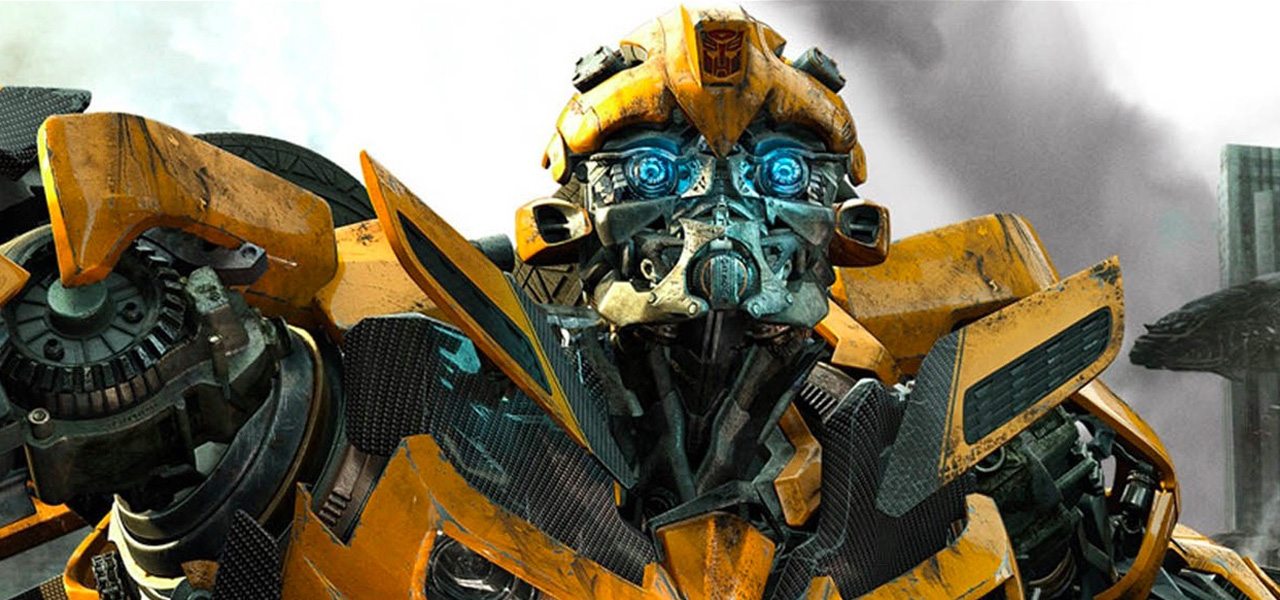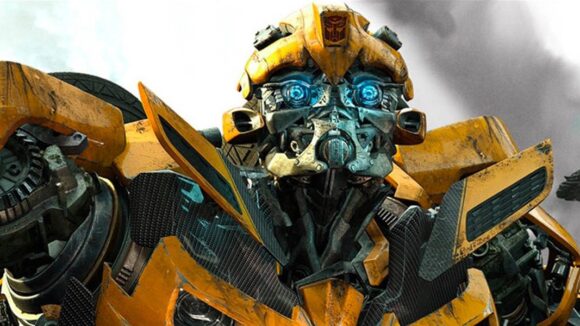

‘Transformers: The Last Knight’: Behind Bumblebee’s New Trick
So far in Michael Bay’s Transformers series, we’ve seen the giant robots morph from vehicles into humanoid shapes, and vice versa. But the newest installment, The Last Knight, has a surprise twist with one of the franchise’s favorite characters, Bumblebee.
Arriving in his Chevrolet Camaro form to respond to the Transformers Reaction Force (TRF) – set up to eliminate the alien robots – Bumblebee disassembles into separate pieces. Then, he ‘transforms’ back into his humanoid form, each metallic piece jettisoning toward each other and in the process taking out several TRF adversaries, often in long slow-motion shots.
Industrial Light & Magic visual effects supervisor Scott Farrar, a veteran of all five films in the Transformers series, breaks down how that Bumblebee sequence was planned out, shot on location, and realized by the vfx artists at ILM.
Imagining the chaos
Bay’s style has affectionately become known as ‘Bayhem,’ in which complex action, explosions, and camera moves are combined to teeter just on the edge of comprehension. But it’s something Farrar and ILM, and his fellow vfx supervisors on the film, Jason Smith and David Fogler, are certainly used to.
“Unbelievably, a lot of the chaos is planned out,” noted Farrar. “We always get the actors and stunt people to duck and move as if things are swinging over their heads, say in the Bumblebee scene. The essential thing to get is some sort of choreography on set that we plan so it fits in with what we think our robot’s going to do.”

Since Bumblebee was a cg creation, an important part of bringing the scene to life was replicating the live-action lighting on the robot’s reflective services. For that, ILM has a tried-and-tested approach to capturing on-set data. This includes the classic chrome-and-gray high-dynamic-range-image (HDRI) balls – used to re-approximate the position and intensity of the lighting.
However, Farrar says the director is always willing to ‘art direct’ the final lighting in the scene. “Michael is the first one to say to us that it’s perfectly fine if we abandon what the real lighting angle of the plate photography was and do, say, more of a backlight,” said Farrar. “And so, even in those Bumblebee shots, you will see that we’ve cheated the key light around so it’s more of an edge light on Bumblebee and his pieces, whenever possible.”
Another on-set approach aimed at aiding visual effects artists down the line in post-production involved the use of painted shapes to represent Bumblebee’s parts. These were stuck on boards via Velcro and then held in front of camera to represent the car paint colors.
“The color temperature changes drastically during the day,” noted Farrar. “So a yellow paint or blue paint or red paint will really look different at noon versus four in the afternoon or seven at night with an artificial light on it. It helps us maintain a consistent look.”

Tricky transformations
In full humanoid form, Bumblebee is an extremely agile fighter. His animation was referenced from a team of martial arts stunt performers, which Bay has also relied upon in the other films in the franchise, who performed a version of the Bumblebee scene at ILM’s motion capture stage. “A lot of it was [co-animation supervisor] Rick O’Connor directing these guys and trying to come up with cooler moves than we’ve done in the past,” said Farrar.

Sometimes the performers were motion captured, while other times they were just filmed for video reference. In either case, the team of ILM animators did use their ‘moves’ directly as reference, albeit transferring their actions to the much larger and heavier form of Bumblebee.
For the disassembling and re-assembling, decisions about how each of Bumblebee’s pieces would be animated were driven by fun ways in which each piece could take out members of the TFN. ILM animation supervisors Paul Kavanagh and Rick O’Connor came up with the gags, says Farrar.
In terms of how the actual transformations took place, the visual effects supervisor calls out the continued work of ILM technical animator Keiji Yamaguchi – on board since the first film in 2007 – for his ability to imagine how the pieces interact and interlock, and inspire others to create similar animations.
“His mind works like no one else that I know,” said Farrar. “And he is able to actually perform these machinations and these animations of the transformations that are incredibly technical and challenging. There’s no fancy software that will solve it, it’s all the artist.”
With Bumblebee set to star in his own spin-off of the Transformers franchise – to be directed by Laika’s Travis Knight – we might just be in for more new tricks from the feisty Autobot, and of course more visual effects artistry.

.png)